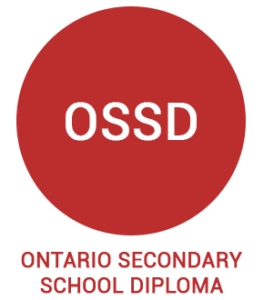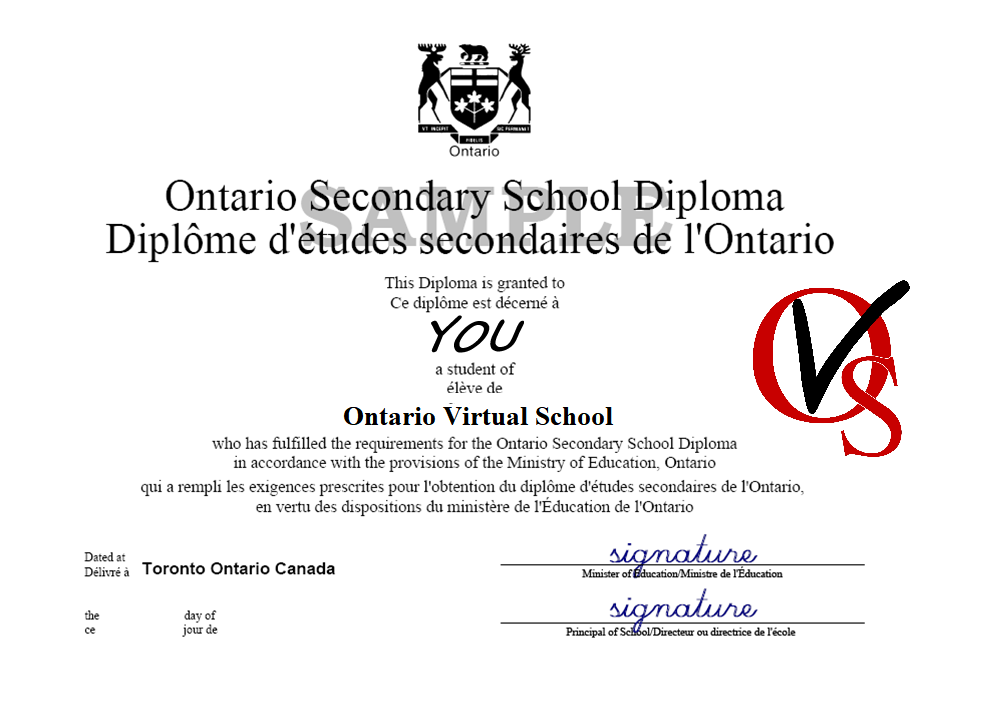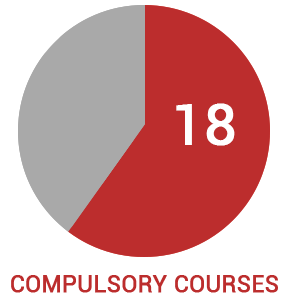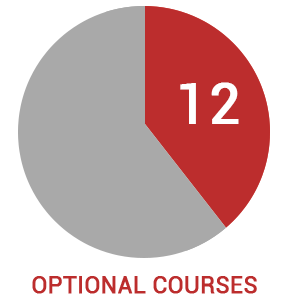Optional Credits
Students must successfully complete 12 optional (additional) credits from areas of interest and/or pathways. These credits will contribute to the 30-credit requirement for an OSSD.
Other Requirements

OSSD is an abbreviation that stands for Ontario Secondary School Diploma. This is a diploma granted to high school students in Ontario, Canada. In order to achieve this, a student needs to complete the Ontario education curriculum.

An Ontario Secondary School Diploma (OSSD) lays the foundation for future learning and growth in any chosen pathway: workplace, apprenticeship, college program, or university program.
The following requirements must be successfully completed in order to obtain an Ontario Secondary School Diploma (OSSD):
• 30 credits including 18 compulsory credits and 12 optional credits*
• At least 2 online courses
• 40 hours of community involvement (CIH)
• Successful completion of the EQAO Ontario Secondary School Literacy Test (OSSLT) or the Ontario Secondary School Literacy Course (OSSLC)*
Click Here to Download OSSD-Requirements Summary

1 Compulsory credits: To meet individual student needs, principals may replace up to 3 of the 18 compulsory credits from the remainder of those that meet the compulsory credit requirements (substitutions).
2 English as a Second Language and English Literacy Development: Maximum of 3 credits may be used to meet requirements for English compulsory credits.
3 French as a Second Language: Maximum of 2 credits may be used to meet the additional compulsory credit requirement (1 credit from Group 1, and 1 credit from either Group 2 or 3).
4 Cooperative Education: Maximum of 2 credits may be used to meet the additional compulsory credit requirement (from any of Groups 1, 2 or 3).

Students must successfully complete 12 optional (additional) credits from areas of interest and/or pathways. These credits will contribute to the 30-credit requirement for an OSSD.
Other Requirements
As part of the diploma requirements, you must complete a minimum of 40 hours of community involvement activities. These activities may be completed at any time while you earn your secondary school credits.
The Literacy Requirement is based on the expectations for reading and writing outlined in the Ontario curriculum up to and including Grade 9.
The Ontario Secondary School Literacy Test (OSSLT) is the standard means for meeting the Literacy Requirement.
You are encouraged to take the test at a local school. If you wish to write the literacy test, please contact Ontario Virtual School. The counsellor will make the necessary arrangements for you to take the test.
The Ontario Secondary School Literacy Course (OLC4O) is also available at to be taken at Ontario Virtual School, to students who are unsuccessful on the OSSLT, or who meet other eligibility criteria. Students who pass the course are considered to have met the Literacy Requirement.

Below is a list of courses that fit into Group 1. To receive an OSSD, you are required to have at least 1 credit from Group 1.
3 French as a Second Language: Maximum of 2 credits may be used to meet the additional compulsory credit requirement (1 credit from Group 1, and 1 credit from either Group 2 or 3).
4 Cooperative Education: Maximum of 2 credits may be used to meet the additional compulsory credit requirement (from any of Groups 1, 2 or 3).

Below is a list of courses that fit into Group 2. To receive an OSSD, you are required to have at least 1 credit from Group 2.
3 French as a Second Language: Maximum of 2 credits may be used to meet the additional compulsory credit requirement (1 credit from Group 1, and 1 credit from either Group 2 or 3).
4 Cooperative Education: Maximum of 2 credits may be used to meet the additional compulsory credit requirement (from any of Groups 1, 2 or 3).

Below is a list of courses that fit into Group 3. To receive an OSSD, you are required to have at least 1 credit from Group 3.
3 French as a Second Language: Maximum of 2 credits may be used to meet the additional compulsory credit requirement (1 credit from Group 1, and 1 credit from either Group 2 or 3).
4 Cooperative Education: Maximum of 2 credits may be used to meet the additional compulsory credit requirement (from any of Groups 1, 2 or 3).